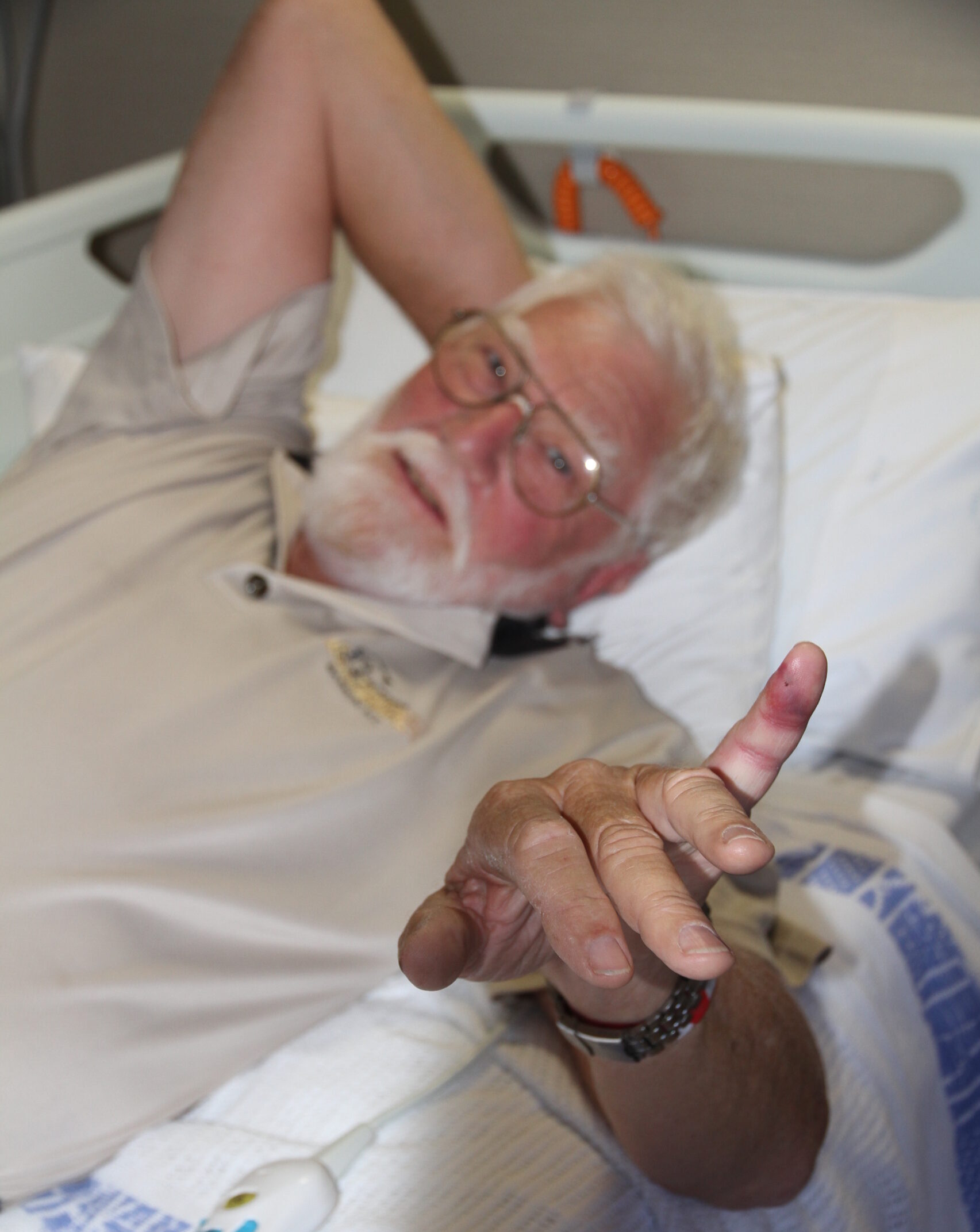With summer here snakes are on the move.
Narrabri district, like most of Australia, is home to a range of venomous snakes – about 57 per cent of bites occur in rural and regional areas.
Narrabri volunteer ‘snake catcher’ Harvey Black reminds people to be cautious if they do happen to see a snake.
“Don’t get too close and stay away from them,” Mr Black advised.
“If you can see the snake, it can see you – and if you disappear, it will as well, if it can.”
The Eastern brown snake or common brown is one of the most frequently sighted snakes in the area.
Their venom is also one of the most toxic in the world and the brown snake can react aggressively if provoked.
Other poisonous snakes including the red-belly black snakes and other common black snakes are also at home locally.
“They’re moving through grass areas all the time,” Mr Black said.
“There are lots of pythons around here, brown snakes are mostly passing through looking for food, so if they are left alone they will keep going.
“Red-bellied blacks are more of a water snake, and quite timid and easy to catch.
“Brown snakes are usually more aggressive.”
Mr Black has experienced a snake bite, back in February 2015.
It was just another day at the office for the volunteer snake removalists Harvey and VRA captain John Hardgrave on a Saturday afternoon when the call came through.
“The snake was in the back store of a local business. It must have come in on one of the trucks.”
Harvey and John found the 1.2 metre black snake, dislodged it from its hiding place and safely bagged it. Ferreting out and bagging an angry snake is not an easy task.
“We had to tug him around a bit and got him in safely in the bag,” said Harvey. “But he wasn’t a happy snake.”
Job done.
“I put it in the catching bag and picked it up by the handles. That is where the snake’s head was and it bit me on the finger.
“After about three-quarters of an hour, I had a big reaction to it and I was in hospital overnight.”
The hospital determined the snake that bit Harvey was either a black snake or a death adder.
“The black snake won’t kill you, but they make you think you’re going to die,” Harvey said.
What’s a snake bite like?
“It started as just a tingling and itching,” said Harvey.
There were no real symptoms, for about half an hour.
“Then, wham,” he said.
The effects of snake bite are not pleasant and as most people know can be life threatening.
As the snake venom began to act, Harvey said he started to feel shaky, cold and then sweating, vomiting and suffering stomach cramps.
“It was a horrible feeling,” the victim admitted.
“It seemed to go on forever.”
Fortunately Harvey and John were close to the hospital and drove straight over to casualty.
“They did a swab and quickly identified the antivenom needed,” said Harvey.
After the antivenom was administered, in a small dose to start in case the patient had a reaction to it, Harvey said his symptoms started to reduce fairly quickly.
“But the onset of the symptoms was a frightening experience,” he said.
He added that the incident was a reminder that ‘no snake should be taken lightly.’ The incident didn’t put him off his voluntary role as ‘snake whisperer.’
Mr Black urged people to ring the catchers only in the event of an emergency evacuation.
“Sometimes we get false alarms – and call outs that are unsuccessful because the snake is not there any more where it was seen.
“If you ring the police, they will get in contact with the VRA and we’ll come and handle the situation.”
Meanwhile, the black snake who put the bite on Harvey back in 2015 went to a better place.
This is not a euphemism – all snakes Harvey and his colleagues retrieve do indeed go to a better place, out in their natural habitat and safely away from humans.
To order photos from this page click here




